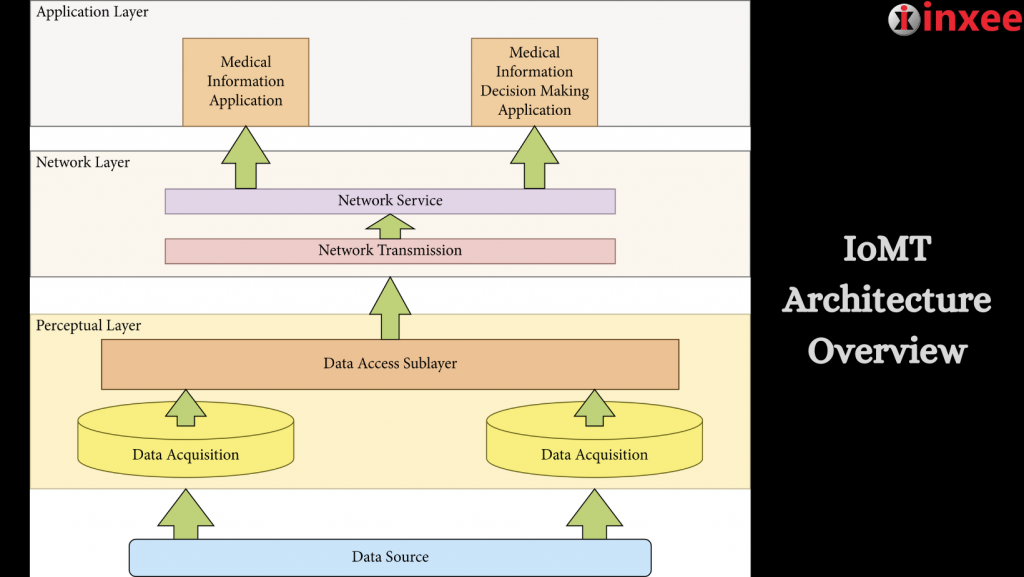IoMT Architecture Overview

The Internet of Medical Things (IoMT) architecture is a framework that enables the seamless integration and connectivity of medical devices, healthcare systems, and data analytics platforms. It is designed to support the collection, management, and analysis of healthcare data in a secure and interoperable manner.
At its core, the IoMT architecture consists of three main components: devices and sensors, connectivity, and data management.
Devices and Sensors: The IoMT architecture encompasses a variety of medical devices and sensors, including wearable health trackers, remote patient monitoring devices, and diagnostic equipment. These devices collect real-time health data such as vital signs, activity levels, and medication adherence.
Connectivity: To facilitate the transmission of data, the IoMT architecture relies on various communication technologies such as Wi-Fi, Bluetooth, cellular networks, and specialized medical device communication protocols. These connectivity options ensure that the collected health data can be securely transferred to the appropriate data management systems.
Data Management: The IoMT architecture leverages cloud infrastructure to store, process, and manage the vast amount of healthcare data generated by the connected devices. Cloud servers, databases, and computing resources provide scalability, reliability, and secure data storage. Data analytics platforms and machine learning algorithms are used to process and analyze the collected healthcare data, generating valuable insights for healthcare providers and researchers.
Security and privacy are critical considerations in the IoMT architecture. Robust security measures such as encryption, authentication, and access control are implemented to protect sensitive patient information from unauthorized access. Privacy regulations and compliance standards ensure that healthcare data is handled and shared securely.
Interoperability is also essential in the IoMT architecture to enable seamless communication and data exchange between different healthcare systems and devices. Standardized communication protocols and health data exchange standards ensure interoperability among diverse IoMT components.
User interfaces and applications provide a means for healthcare providers, caregivers, and individuals to interact with the IoMT system. Mobile apps, web portals, and specialized healthcare software enable real-time monitoring, data visualization, and remote healthcare management.
Overall, the IoMT architecture revolutionizes healthcare delivery by leveraging connected devices, data analytics, and cloud computing. It enables remote patient monitoring, personalized medicine, preventive care, and improved patient outcomes. By harnessing the power of the IoMT architecture, healthcare providers can enhance efficiency, accuracy, and patient-centricity in healthcare services.









Leave a Reply